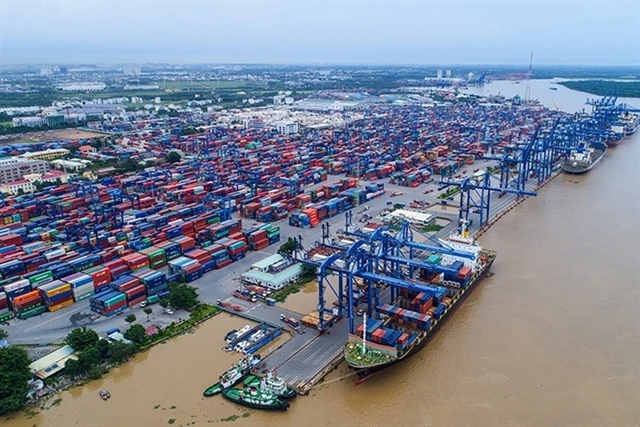The Ministry of Industry and Trade (MoIT) has requested local associations and businesses to coordinate implementing key solutions to promote imports and exports as sea freight rates rise.
 The Cat Lai Port has the largest cargo output in the country, accounting for 50% of the total cargo output.
The Cat Lai Port has the largest cargo output in the country, accounting for 50% of the total cargo output.
Hanoi (VNS/VNA) - The Ministry of Industry and Trade (MoIT) has requested local associations and businesses to coordinate implementing key solutions to promote imports and exports as sea freight rates rise.
The MoIT’s official dispatch was sent on July 19 to the Vietnam Logistics Business Association, the Vietnam Ship-owner’s Association, the Vietnam Shipper’s Council and the Vietnam Ship Agents, Brokers and Maritime Services Providers Association.
The ministry said that in recent times, increases in shipping rates, local congestion at some Asian ports and lack of empty containers have had an impact on activities.
The ministry proposes strengthening co-ordination between associations and businesses to improve capacity, gather member businesses to jointly develop production and business and transportation plans and goods import and export plans as a basis for signing long-term contracts with shipping lines, minimising the impact of freight rates and surcharges in the current period of complex and unpredictable developments in the international market.
Besides by sea, businesses importing and exporting to Europe can consider alternative routes, including a combined multilateral transport route, going by sea to ports in the Middle East, and then travelling by air, rail or road to Europe.
Import-export industry associations should coordinate with the MoIT, the Vietnam Chamber of Commerce and Industry and relevant agencies to increase dissemination about the provisions of free trade agreements to local import-export businesses to facilitate trade and enhance preferential utilisation rates from these agreements.
Import-export enterprises have been asked to coordinate with customs authorities and port operators to speed up the process of handling backlogged goods at ports, contributing to promoting the flow of goods and improving the capacity of handling goods at ports.
Industry associations should also coordinate with VCCI to strengthen communication and improve the capacity of import-export SMEs in negotiating and signing foreign trade and insurance contracts to protect businesses against risks and losses when incidents occur, especially with sea cargo going through high-risk routes.
The ministry also proposed associations and import-export businesses to proactively develop prevention and response plans to minimise risks and losses from similar complex and unpredictable incidents in the future./.
Source: VietnamPlus